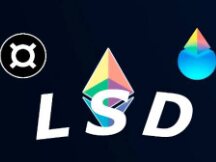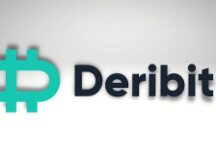Ethereum 2.0 Year 1 What do we see changing in Ethereum?
According to a Github press release by Ethereum testnet developer Afri Schoedon on November 5, 2020, Ethereum 2.0 will be released on December 1. The world's most powerful chain of citizens begins to walk the path of the imagination.
Ethereum 2.0 will be released as planned for December 2020. Once completed, the Ethereum node token contract will begin, but miners can still mine on Ethereum 1.0, but the cost of energy mining will gradually decrease. After all the new needs, the Ethereum 1.0 chain will gradually disappear after integration and eventually become a waste chain.
Let's take a look at Ethereum's development and changes in December 2021, the first anniversary of the release of Ethereum 2.0.
First of all, you need to know why the original "ETH 1.0" was discontinued.
1. High cost
Before the advent of CryptoKitties in 2017, and this year, as the DEFI wave increases the bandwidth of the ETH chain, operating costs have to increase further to gain a better experience, sometimes leading to a "war fat oil" . This was done with the evidence of current ETH exploitation. Now ETH has received the POW operating certificate, and after upgrading to 2.0, it will be converted to POS certification of participation.
Captives vs. POS?
Conflicts of opinion are common, and POWs have to deal with miners' knots and count and solve math problems to argue over wrapping rules in the next exchange. Since POW is very safe, if a person wants to interfere with the string data, the ECU has to be very large and now has multiple levels of energy metering. However, POW uses a lot of power in a computer, and it requires a lot of energy and material costs.
The POS is a stakeholder conversion method that replaces [minors] and [electricity] prisoners of war by [producing evidence] and [swearing], and witnesses replace minors for the poll. First block and solve using a force contract. All physicians should make sure that the validation behavior is not bad. Otherwise, the property will be penalized.
Compared with the high electricity and material costs of POW, the POS is more user-friendly, so the operating costs are greatly reduced.
2. Slow operation
In ETH version 1.0, only one keychain is running and the number of transactions per second per POW operation certification is around 12 to 30. This means that the capacity in the blocks is the medium of '' open more strings to form data, either by vertical expansion of block capacity or by horizontal expansion. Thus, as a more distributed concept, ETH 2.0 adopts “sharding” technology. The ability of the Ethereum network to create parallel files has been improved.
3. Environmental issues
The POW mechanism has always been criticized for protecting the environment. A large amount of material loss solves a nearly "unused" problem, while at the same time causing a lot of wasted energy. The heat dissipated from the whole process only means that the expansion of the ETH ecosystem will lead to greater usage due to the greater demand for the market, which is incredibly different for the main purpose of blockchain. .
4. "Multiple" decentralization
Take the example of Bitcoin, which also uses the POW worker authentication mechanism. Currently, around 65% of Bitcoin mining is done by large mining groups, which can theoretically co-manage over 50% of the electricity market (which it does not). This creates a problem that Bitcoin and other PoW blockchain networks do not appear decentralized as expected, making them more independent and efficient.
And this ETH2.0 modification requires a guarantor to guarantee 32 ETH. It's a small thing. It's not big because most people can realize it. 32 This is not a new product which is somewhat attractive to release ETH. , and above all, such a design makes the use of the apparatus easier for the users and often more difficult to control than the machine itself.
What is the current level of Ethereum 2.0?
Ethereum 2.0 is divided into several stages.
The first phase, called the beacon chain, started on December 1, 2020. The beacon chain reflects the concept of key chain for Ethereum, the importance of network transitions to a PoS consensus mechanism. As the name suggests, it is a blockchain independent of the Ethereum mainnet.
The second phase is called the integration and is expected to take place in the first or second quarter of 2022 and will integrate the beacon chain into the Ethereum mainnet.
The last step is the interconnection chain, which will play an important role in measuring the Ethereum network. Instead of solving all the tasks on a single blockchain, Fragment Chains distribute those tasks across 64 new chains.
It also means that running the Ethereum node is easier, because from a hardware point of view there is less data to store on the machine.

In fact, it's been over five months since Ethereum completed its "London" review on August 5, 2021. The "London" review includes the five proposals: EIP-1559, EIP -3198, EIP-3529, EIP-. 3541 and EIP-3554. Among them, EIP-1559, which deals with Ethereum oil exchange, is the most preferred. After the EIP-1559 concept review, any change to Ethereum would burn base fuel costs and decide to cut Ethereum utilities. Currently, approximately 1,247,975 Ethereum has been destroyed (data as of December 23) and approximately 290,000 Ethereum has been destroyed in the past 30 days, up to 10,000 per day.

The current main applications of the Ethereum chain are worth millions of dollars in Ethereum every day.
What changes will 2.0 bring to Ethereum?
According to Ethereum developer Vitalik Buterin, as the network transition to Ethereum 2.0 is long overdue, Ethereum estimates that its trade volume per second (TPS) will reach 2000-3000 TPS and ultimately 100,000 TPS. With Layer 2 scaling, Ethereum will become a super decentralized computer.
After 1.0 and 2.0 integration, the PoW proof of work will be discontinued, making Ethereum mining unique in the past. Based on the estimated destruction of 10,000 per day as per the instructions above, approximately 3.65 million Ethereum will be burned each year. The acceleration of combustion due to the increase in TPS after expansion capacity is not calculated here. Based on the current production of 118 million Ether, we will reduce ETH by 3% per year. Truly step into Ethereum in a time of endless skepticism.
Ethereum entered a period of deflation and became a driver following the growth in its market value. However, network congestion and high exchange rates remain at the heart of Ethereum. This gradual expansion of the chain is the key to the future development of Ethereum.
In fact, on December 7th Vitalik Buterin also announced the idea of large-scale blockchain, how to achieve scalability, how to increase block size, increase fuel consumption and 2 layers of technology. A unique feature of the Ethereum L2 network and applications is to improve business efficiency and reduce transaction costs without disrupting distribution.
In terms of Layer 2 technology release, there are now two main markets: Broadcast Media and ZK Rollup. Vitalik Buterin added that Layer 2 is the future of Ethereum scaling. He added that using Layer 2 to complete Ethereum's scaling is the only secure way to complete the separation of Ethereum, the heart of the blockchain.
Currently, the Ethereum community implements both off-chain scalability strategies and on-chain scalability strategies. Off-chain scaling represents a new way to provide external performance for traditional chains like Ethereum. People call these new developments "Layer 2" (short L2). This means that the market completes the second outer layer of Ethereum, thereby improving the performance of Ethereum L1. Chain scaling refers to the direct blockchain exchange to increase access (i.e. the value of the business it can operate per second). Off-chain scaling solutions like Rollups and Validiums will measure Ethereum in the short term, but in the longer term, the Ethereum network uses sharding, which means Ethereum L1 can be split into multiple chain shares. . . chain of shards).

concludes
After May 2022, the Ethereum PoW mechanism will make history and enter the era of chains that rarely reach the public. While Ethereum's state of decline will lead to promising markets for its growth, we are also seeing rising stars in the public chain ecosystem continue to challenge Ethereum. Can Ethereum handle its current business model? Let's wait.

Scan QR code with WeChat































